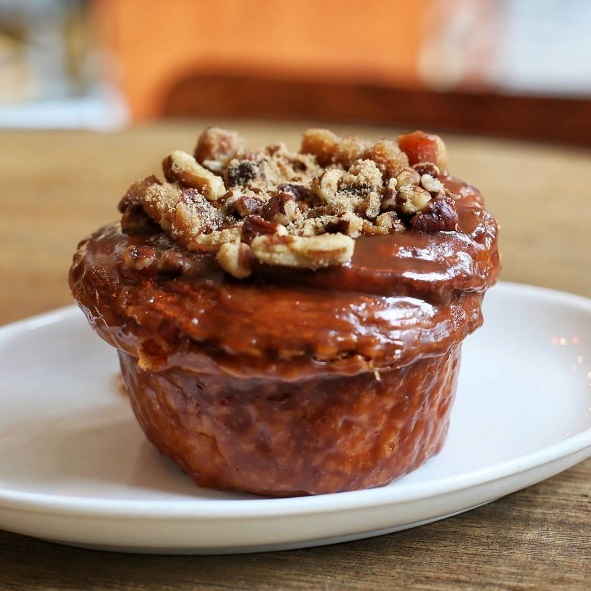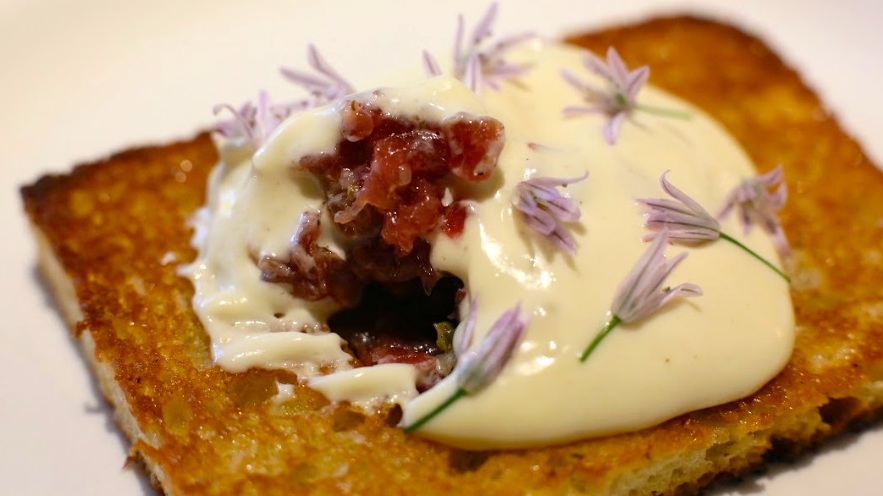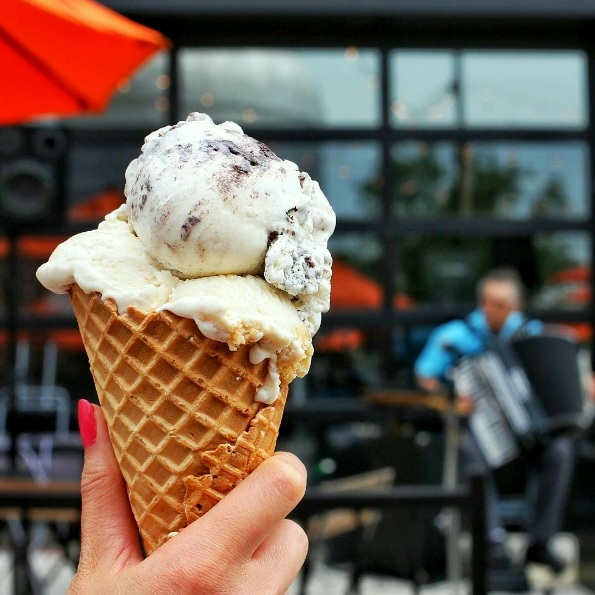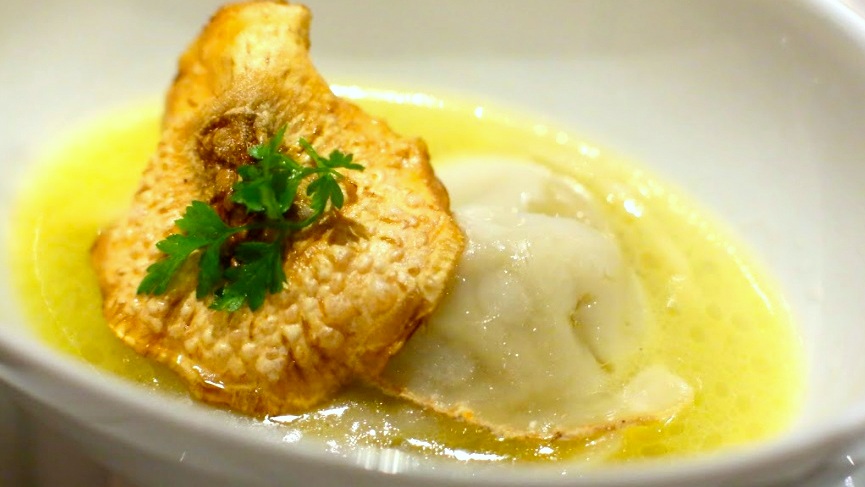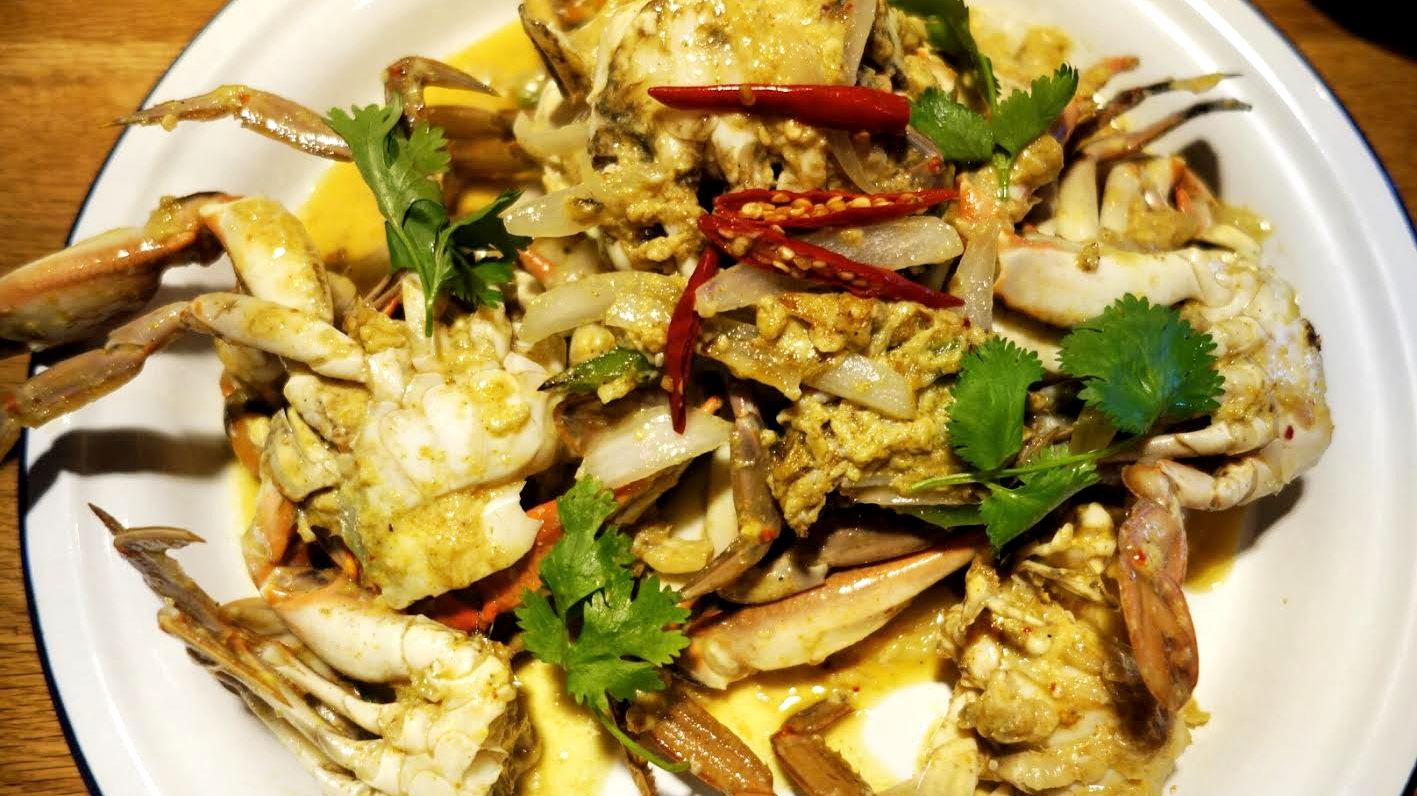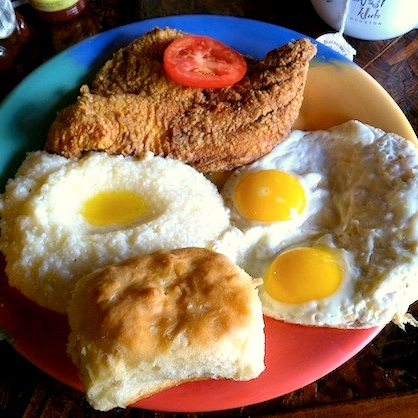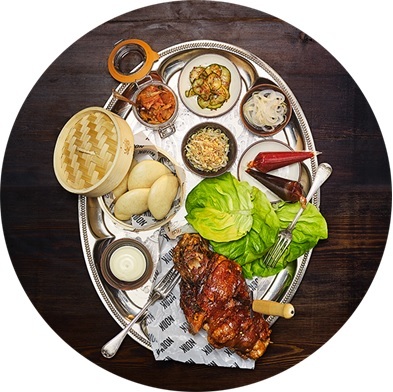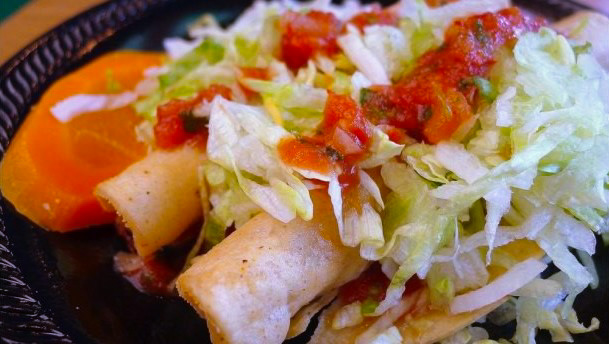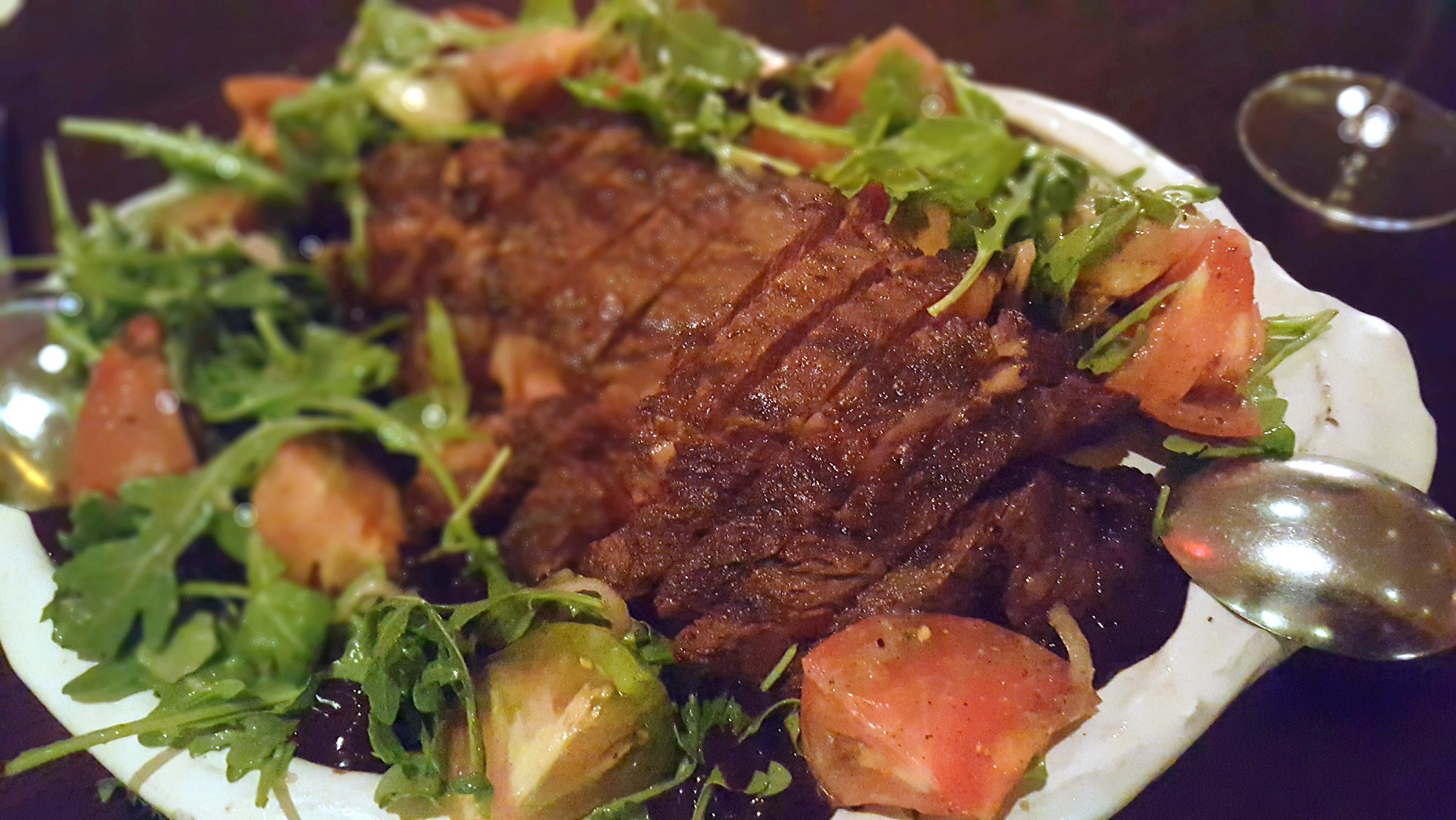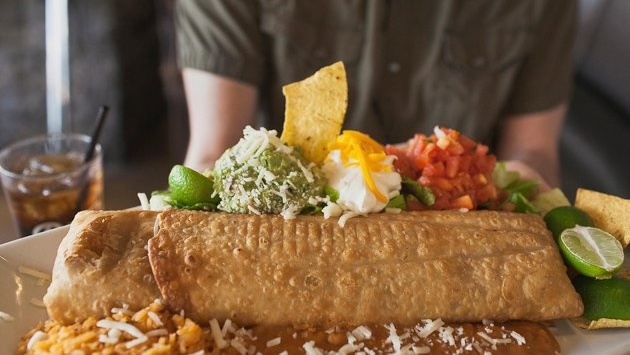Mercantile is a mini dining pavilion in itself, featuring a cafe, small bakery, artisan meat and cheese counter, small retail selection, sit-down restaurant, patio and take-out. This bacon sticky bun is an American dessert, but made with French technique and refinement. The pastry is made with Danish dough, so it is buttery rich and flaky on the outside, and tender soft and sweet inside. It is baked until caramelized crisp with a crackly exterior from a candy shell-like caramel coating. It is sticky, sweet, chewy and delicious with cinnamon, and topped with good quality house-made salty sweet bacon and candied pecans. It isn’t too sweet and even better than expected.
See the blog post: http://tinyurl.com/htjhyz6
Chef-proprietor Frank Bonanno’s Mizuna is an institution for fine dining in Denver. It is another “top of the list” restaurant on any food and enthusiast’s Denver dining itinerary. While the city is fairly laid back and casual, this white tablecloth restaurant still has a loyal following and clientele. The Dry Aged Beef Tartare and Butter Poached Maine Lobster Macaroni & Cheese are classic Mizuna dishes not to be missed. Chef Bonanno used to work for Thomas Keller at The French Laundry, so the mac ’n’ cheese is a Keller recipe (stated on menu). Although the chef’s tasting menu gives room for creativity, the a la carte options are more consistent and promising. Regardless, Mizuna is a must-try.
See the blog post: http://tinyurl.com/htjhyz6
Little Man Ice Cream is the most beloved ice cream shop in Denver. This is not just an ice cream shop. This ice cream shop attracts people of all ages and brings the community together with its inviting initiatives and events. From live music, dances and entertainment, this ice creamery is an attraction itself. The flavors are funky, the portions are generous, the quality is good, and the waffle cones are made fresh on the spot, but smell better than they taste. The Salted Oreo is actually quite salty, so it’s best enjoyed in limited amounts. The Banana Pudding with pieces of pie crust is fantastic and a great pairing with the Salted Oreo. Be prepared for long lines.
See the blog post: http://tinyurl.com/htjhyz6
Anyone in Denver who appreciates good food and wine will likely recommend Rioja, for good reason. Rioja is the flagship upscale restaurant for chef and owner Jen Jasinski, a well-known chef who was a contestant on “Top Chef Masters.” The signature dish is the James Beard award-winning Artichoke Tortelloni filled with artichoke mousse, white truffle brodo (broth), queso de mano and chervil. The other must-try is the Fresh Bacon – pork belly, cardamom and curried garbanzo bean purée, which has been on the menu since day one. I recommend getting the tortelloni and bacon as a duo, which is a smaller portion of both served together (save stomach space to try more things). It’s not advertised, but is available to all guests.
See the original blog post: http://tinyurl.com/htjhyz6
This Thai fusion restaurant was named one of the 50 best new restaurants in the country in Bon Appetit magazine’s 2016 list for good reason. The food Chef P.J. Stoops serves is not your average Thai. He pushes the flavors to the max to bring his unique perspective to Northern Thai dishes, while adding some Texas flair to fresh and locally sourced meats and produce. Most ingredients are being grown by Cambodian farmers in nearby Rosharon, who cultivate more than 60 of the crops and unique ingredients implemented in the menu. Farmer Sameth Nget grows primarily water spinach but also other Asian fruits, vegetables, and herbs, many not available commercially anywhere else in the U.S. Nget raises ducks for the restaurant, with duck eggs being an important star on the menu.
Marcus Davis opened the Breakfast Klub in September 2001 featuring two signature dishes: Katfish & Grits and Wings & Waffles. Today, the Breakfast Klub in Houston is a cornerstone of breakfast in a sea of “me too” options. Recognized as one of the “best breakfast restaurants in the nation” by “Good Morning America,” USA Today, Esquire and Forbes, the catfish, grits, biscuit and eggs are spectacular. A Southern plate of wonder served in a unique venue bursting with personality.
See The Blog Post: http://tinyurl.com/hebvo55
A gem in the jungle of restaurants on Södermalm, Nook dishes well-executed, nicely presented and ambitious food in a casual, uncluttered setting. Claes Grännsjö’s ambition was to offer great food for an affordable price. He brought along his old colleague and sommelier from Kock & Vin in Gothenburg, Alexander Bäckman, and together they opened the doors at Nook in February 2014. The food is international, with influences from Asia and the Mediterranean combined with a lot of Scandinavian flavors. Every night, there are two three-course set menus, two of the best value options in the city, for SEK350 or 400. Scallops, rain deer, duck and monkfish frequent the menu. Even if the dining area is full, you can always go to the bar next door and eat from the snack menu. Try the steamed buns. You’ll love them.
See Niki's Blog Post: http://tinyurl.com/gvlead2
While Cielito Lindo is credited with inventing the modern taquito, El Indio in Mission Hills is credited with naming it to earn its place in history. Founded as a tortilla factory in 1940, El Indio’s founder, Ralph Pesqueira Sr., popularized the word “taquito” or “little taco” in the San Diego area. The spot morphed into a restaurant after World War II. The taquito is still the restaurant’s most popular item. Sold individually, tortillas are made fresh every day, then, depending on the order, stuffed and rolled with shredded beef, shredded chicken, potato, salsa, lettuce, cheese and guacamole. Want more? The salsa bar has an outstanding variety of tasty to spicy sauces. The salsa bar has an outstanding variety of tasty to spicy sauces.
Pro tip: The counter-service space is nothing fancy. Eat outdoors on the patio.
This charming neighborhood restaurant, named from the Latin phrase for “American Peace,” serves some of the tastiest modern American cuisine in the city, and arguably in the state. Chef Adam Dorris, skilled at combining the freshest local ingredients with his extensive culinary skills in butchering, pickling, smoking, brining and fermenting, offers a small, rotating menu that is big on flavors. Think quality over quantity with a focus on bringing in the best local meat, fish and produce. Additionally, the plates are small to medium sized, making it easy to enjoy several dishes at one meal. A few menu items that you must try: whipped goat ricotta, pictured, with white beauty eggplant caponata, pine nuts, white anchovy and arugula; nine-spiced smoked brisket and, if available, the 40-day, dry-aged Texas Wagyu ribeye.
Established in 1922 by Tia Monica Flin, El Charro Café in Tucson, Arizona, is the nation’s oldest Mexican Restaurant in continuous operation by the same family. Monica, a burgeoning chef, came to Tucson via France in the 1800’s when her father, Jules, a famous stone-mason, was commissioned to build the city’s St. Augustine Cathedral. Jules, whose work can be seen throughout Tucson’s Historic District, also built the family’s residence in 1896, now home to the Original Downtown El Charro Café location on Court Avenue. At first, the café was a one-woman operation, with Monica acting as hostess, waitress and chef. The café creator is also well-known as “The Inventor of The Chimichanga.” While frying her now-famous El Charro ground beef tacos, Monica accidentally dropped a burro into the frying pan and when the oil splashed up, she started to utter a common Spanish cuss word starting with “Chi.” But, because she was among her young nieces and nephews, she changed it to “Chimichanga,” the equivalent of “thingamajig.” A Tex-Mex classic was born. Today, El Charro is among the most critically acclaimed restaurant brands in the U.S. Featuring Sonoran and innovative Tucson-style Mexican food, in 2010 El Charro was named one of America’s Top 50 Restaurant Icons by Nation’s Restaurant News.


